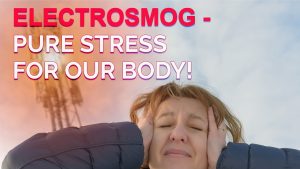According to the 2017 UN World Drug Report, 183 million people worldwide use cannabis and the trend is increasing, thus making cannabis by far the most used illegal drug. Cannabis is used in the form of marijuana (dried inflorescences and leaves), hashish (resin of flowers mixed with plant parts) or hashish oil (viscous extract from the resin). The age group with the highest consumption is young adults and adolescents. In Europe, 70% of people who take cannabis daily or almost daily are between 15 and 34 years old.1
 Cannabis, the biological name for the hemp plant, is one of the oldest cultivated plants in the world and is currently experiencing a boom. Comparable to the “Gold Rush” in the 19th century, similarly a “Green Rush” is currently taking place. While revenues of legal marijuana sales in the US were between $2.2 and $2.6 billion in 2014, they are expected to grow to $8 billion in 2018.2 Saturation of the market is not expected until $110 billion in revenues. (In comparison: The total sales of cigarettes in the US is only just a quarter of marijuana turnover.)3
Cannabis, the biological name for the hemp plant, is one of the oldest cultivated plants in the world and is currently experiencing a boom. Comparable to the “Gold Rush” in the 19th century, similarly a “Green Rush” is currently taking place. While revenues of legal marijuana sales in the US were between $2.2 and $2.6 billion in 2014, they are expected to grow to $8 billion in 2018.2 Saturation of the market is not expected until $110 billion in revenues. (In comparison: The total sales of cigarettes in the US is only just a quarter of marijuana turnover.)3
Cannabis is generally perceived as a “soft drug” with negligible, reversible side effects that are non-addictive and do not pose a threat to others; therefore, a ban appears disproportionate. What is more, cannabis is a potent medicinal herb that is said to work wonders for cancer, multiple sclerosis, pain, epilepsy and many other diseases and ailments. As a result, pressure is rising on legislators in many countries to legalize (or having already legalized) cannabis. And while it is true that cannabis is a precious, versatile plant and definitely has medical potential, it is by no means harmless, in particular for the age group with the highest consumption – the youth – it can be dangerous.
Cannabis affects the nervous system – The long-term effects are unknown
 The cannabis plant contains several hundred chemical substances, at least 80 of which are so-called cannabinoids, of which tetrahydrocannabinol (THC) and cannabidiol (CBD) occur in the highest concentrations. Cannabinoids interact with the body’s own endocannabinoid system, which influences, among other things, relaxation, nutrition, sleep and memory. They penetrate the blood-brain barrier and act on the cannabinoid receptors in the human brain, thus directly interfering with the central nervous system. While CBD is primarily responsible for the medical effects and is not intoxicating, THC ensures that you get “high”. THC and CBD are antagonists. They are formed from the same primordial substance and can balance or neutralize each other’s effects. When a few decades ago, the ratio of THC to CBD was approximately 10:1, with a THC content of less than 3%, the ratio in today’s cultures is 100:1, with the THC content now exceeding 30%.4 So today’s cannabis has lost its natural balance in terms of THC-CBD content and can therefore no longer be compared with the former remedy of the ancient Chinese or Egyptians or with the joint of the “flower power generation”.
The cannabis plant contains several hundred chemical substances, at least 80 of which are so-called cannabinoids, of which tetrahydrocannabinol (THC) and cannabidiol (CBD) occur in the highest concentrations. Cannabinoids interact with the body’s own endocannabinoid system, which influences, among other things, relaxation, nutrition, sleep and memory. They penetrate the blood-brain barrier and act on the cannabinoid receptors in the human brain, thus directly interfering with the central nervous system. While CBD is primarily responsible for the medical effects and is not intoxicating, THC ensures that you get “high”. THC and CBD are antagonists. They are formed from the same primordial substance and can balance or neutralize each other’s effects. When a few decades ago, the ratio of THC to CBD was approximately 10:1, with a THC content of less than 3%, the ratio in today’s cultures is 100:1, with the THC content now exceeding 30%.4 So today’s cannabis has lost its natural balance in terms of THC-CBD content and can therefore no longer be compared with the former remedy of the ancient Chinese or Egyptians or with the joint of the “flower power generation”.
Since the ratio of CBD to THC determines whether a cannabis preparation is therapeutic or psychoactive, 5, anyone who insists on the medical use of cannabis should therefore demand products with a high CBD and low THC value.6 In practice especially the legal cultivation for the purpose of self-medication is demanded, which raises the question whether the proponents of legalization are not primarily interested in the “right to intoxication”. With self-medication, the consumer has little idea of how much THC or CBD he takes. So far, no lethal dose of cannabis is known, but there is a risk of overdose, especially if cannabis is not smoked or inhaled (which are the most common forms of consumption), but is taken orally, i.e. in food, by which its effect is delayed. It is a fact that so far we do not know anything about the effects of most substances in the cannabis plant. The long-term effects of cannabis are still poorly researched,7 and even with CBD products, which are currently legally tradeable in many countries, we don’t really understand about the effects nor the risks of CBD.8
Cannabis can cause psychosis – Who will meet this fate, nobody knows

By contrast, studies over the past 30 years have shown a direct correlation between the use of cannabis and the development of psychosis.9 Like all substances with addictive potential, cannabis acts on the reward center of the brain, where it stimulates the release of dopamine, a neurotransmitter that causes a feeling of happiness and is also responsible for motivation. Drug dopamine release is many times higher than natural dopamine release, which occurs through natural behaviour such as sex. For this reason it is claimed that cannabis increases well-being. The use of cannabis can now increase the concentration of dopamine in the brain so much so that the brain metabolism gets out of balance. As a result, psychosis may occur, manifesting itself for example in hearing voices, hallucinations, paranoia, confusion, absent-mindedness and concentration disorders. If the symptoms persist even after the body has metabolized its addictive substance, we talk of a chronic psychosis, also called schizophrenia. Treating schizophrenic patients costs a lot of money, and in the US alone, the cost of treatment is around $63 billion a year.10 Costs that are paid by the state – thus, by the taxpayer. The higher the proportion of THC in cannabis, the greater the risk of developing a psychosis. And it is true that this applies especially to people who have a corresponding genetic predisposition. But who knows whether he or she belongs to this population group or not? However, the risk of developing schizophrenia increases by 37% due to cannabis use.11
Young people irretrievably damage their brains with cannabis
Those who regularly consume cannabis for years or even decades also run the risk of proverbially destroying their brain because of smoking pot. People who start smoking weed in adolescence lose about 10% of their intelligence within 20 years. Because the brain starts to break down dopamine receptors in an effort to self-regulate when there is a constant excess of dopamine, up to the point that the brain cells die, there can be permanent losses in brain performance. Since brain maturation is not completed until around the age of 25, the risk of irreversible damage to the brain and its development 12 through cannabis use is particularly high for adolescents. There is a direct correlation between the age of onset, duration and amount of use and brain damage. Or to put it a little boldly: The earlier and more often a person uses cannabis, the more dangerous it is for their health. The development of the brain is also impaired in the foetus, i.e. when cannabis is used during pregnancy, and irreversible damage can result.4
Cannabis smoke alters DNA – no danger for others?
In addition to the mentioned possible effects of cannabis use such as psychosis, schizophrenia, reduced brain development and loss of brain performance, memory and concentration disorders or learning problems; use may also result in reduced performance, impaired circulation and immune system, impaired reproduction and reduced libido, an increased stroke and heart attack risk as well as lung diseases like COPD. Of course, a number of these diseases are directly related to the fact that cannabis together with tobacco is rolled into and smoked as a cigarette, adding to cannabis the well-known effects of tobacco abuse, even more so when most cannabis smokers in home-made joints do not use a filter to get the full THC effect. As cannabis burns at much higher temperatures than tobacco, even more toxins are produced.4 The claim that smoking via a water pipe (bong) is less harmful because the water “purifies” the smoke is a myth. The smoke is only cooled down, which makes smoking easier. By contrast, a single pull on the hookah is almost the same as the smoke volume of a whole cigarette, which makes the hookah even more harmful.13 Taking cannabis via an evaporator is by no means harmless since it also limits brain development and can put toxins on the body.14 Scientists also found DNA-altering and possibly cancer-promoting effects of the inhalation of cannabis smoke,15 which raises the question with regard to passive smoking whether there is actually no risk for bystanders with cannabis smoking, as is constantly claimed. Incidentally, this also applies to the increased risk of accidents due to cannabis use. Cannabis stays in the body much longer than alcohol, which is why, for example, the risk of a fatal car accident is even higher than while under the influence of antidepressants or opioid-containing substances.4
Liberalization gives the appearance of harmlessness – young people consume more
 Again and again, in the context of a liberalization of cannabis, the protection of minors is mentioned, which is claimed to be given and therefore supposedly protects this particularly vulnerable age group. However, the figures from countries where such liberalization and legalization have already taken place paint a different picture. In countries with a more liberal cannabis policy, adolescents consume significantly more than in countries with restrictive legislation, and where the trade in so-called medicinal cannabis is allowed, the use of marijuana among minors increases.4,1 This is why, for example, the American Academy of Pediatrics speaks out against the legalization of cannabis. Making cannabis more easily accessible to adults also increases ease of access for children and adolescents. The campaigns to legalize cannabis would only have the effect that young people perceive cannabis as harmless and a safe substance and therefore consume it more frequently, which could have a devastating effect on their lifelong development and health.16 For it has long been proven that there is a direct correlation between the perception of the harmlessness of a substance and its consumption.4
Again and again, in the context of a liberalization of cannabis, the protection of minors is mentioned, which is claimed to be given and therefore supposedly protects this particularly vulnerable age group. However, the figures from countries where such liberalization and legalization have already taken place paint a different picture. In countries with a more liberal cannabis policy, adolescents consume significantly more than in countries with restrictive legislation, and where the trade in so-called medicinal cannabis is allowed, the use of marijuana among minors increases.4,1 This is why, for example, the American Academy of Pediatrics speaks out against the legalization of cannabis. Making cannabis more easily accessible to adults also increases ease of access for children and adolescents. The campaigns to legalize cannabis would only have the effect that young people perceive cannabis as harmless and a safe substance and therefore consume it more frequently, which could have a devastating effect on their lifelong development and health.16 For it has long been proven that there is a direct correlation between the perception of the harmlessness of a substance and its consumption.4
There is also the risk of developing a cannabis dependence. About 9% of people who experiment with marijuana become addicted. The proportion increases to one-in-six people, when consumption starts in adolescence, and between 25 and 50% for daily consumption.17 For example, in both Germany and Switzerland, the number of people who need outpatient or inpatient treatment or addiction help, because of their major problem with cannabis, has steadily increased. In Switzerland, more people are being treated for cannabis dependence than for opioid dependence18 and for under 25-year-old Germans, cannabis is also the number one reason for treatment.4 It is always important to remember that differentiating between hard and soft drugs is irrelevant to our bodies. Our brain does not distinguish what it is dependent on; a drug is a drug! However, quitting cannabis is not easy, primarily because cannabis is the drug with the most positive image by addicts and is considered harmless. Unlike alcohol, heroin or nicotine addicts, therefore, cannabis addicts do not see their drug as a problem and it is therefore often difficult to persuade them to remain completely abstinent.4
In doubt for the accused – not for cannabis!
To demonize the cannabis plant and make research impossible is probably the wrong way to go. However, whether we can afford to give the appearance of harmlessness by liberalizing this drug and to allow through use of cannabis especially adolescents and young adults to permanently damage their brain in high numbers with all its social and economic consequences, the dumbing down, inability to work and drug dependence they are carrying with them, are more than questionable. To put it in the words of Dr. Sharon Levy, Chair of the Drug Abuse Committee of the American Paediatrics Academy: “It took several generations and cost millions of lives and billions of dollars to assess the harmful effects of tobacco on health, even though those damages are overwhelmingly high. We should not consider marijuana as harmless given what we already know about its harm to adolescents until we can prove otherwise.”16
Sources:
1) http://www.unodc.org/wdr2017/field/Booklet_3_Plantbased.pdf
2) http://www.forbes.com/sites/caroltice/2015/02/05/why-legal-cannabis-is-2015s-best-startup-opportunity/#1d40bf55a4a7
3) http://www.spiegel.de/international/business/pot-becomes-big-business-as-states-legalize-cannabis-a-977628.html
4) Dr. Yazdi, Kurosch (2017): Die Cannabis-Lüge. Schwarzkopf & Schwarzkopf. (in German)
5) Koppel BS, Brust JC, Fife T, Bronstein J, Youssof S, Gronseth G, Gloss D (April 2014). “Systematic review: efficacy and safety of medical marijuana in selected neurologic disorders: report of the Guideline Development Subcommittee of the American Academy of Neurology”. Neurology. 82 (17): 1556–63.
6) Iseger TA, Bossong MG (March 2015). “A systematic review of the antipsychotic properties of cannabidiol in humans”. Schizophrenia Research. 162 (1–3): 153–61. / Sachs J, McGlade E, Yurgelun-Todd D (October 2015). “Safety and Toxicology of Cannabinoids”. Neurotherapeutics. 12 (4): 735–46.
7) Whiting PF, Wolff RF, Deshpande S, Di Nisio M, Duffy S, Hernandez AV, Keurentjes JC, Lang S, Misso K, Ryder S, Schmidlkofer S, Westwood M, Kleijnen J (23 June 2015). “Cannabinoids for Medical Use: A Systematic Review and Meta-analysis”. JAMA. 313 (24): 2456–73.
8) Factsheet CBD, Sucht Schweiz, August 2017. (in German)
9) Gage SH, Hickman M, Zammit S. Association between cannabis and psychosis: epidemiologic evidence. Biol Psychiatry 2016; 79: 549–556. / Moore TH, Zammit S, Lingford-Hughes A, Barnes TR, Jones PB, Burke M et al. Cannabis use and risk of psychotic or affective mental health outcomes: a systematic review. Lancet 2007; 370: 319–328.
10) McEvoy JP. The costs of schizophrenia. J Clin Psychiatry 2007; 14: 4–7.
11) J. Vaucher, B. J. Keating, A. M. Lasserre, W. Gan, D. M. Lyall, J. Ward, D. J. Smith, J. P. Pell, N. Sattar, G. Paré, M. V. Holmes: Cannabis use and risk of schizophrenia: a Mendelian randomization study. In: Molecular psychiatry. January 2017 (https://www.nature.com/articles/mp2016252)
12) French L, Gray C, Leonard G, Perron M, Pike GB, Richer L et al. Early cannabis use, polygenic risk score for schizophrenia and brain maturation in adolescence. JAMA Psychiatry 2015; 72: 1002–1011.
13) www.tobaccoatlas.org
14) https://www.naturalscience.org/news/2017/02/us-surgeon-general-e-cigarettes-are-unsafe-for-young-people and https://www.naturalscience.org/videos/?t=112#22905
15) http://www.ncbi.nlm.nih.gov/pubmed/19449825 Evaluation of the DNA damaging potential of cannabis cigarette smoke by the determination of acetaldehyde derived N2-ethyl-2′-deoxyguanosine adducts.
16) https://www.aap.org/en-us/about-the-aap/aap-press-room/Pages/American-Academy-of-Pediatrics-Reaffirms-Opposition-to-Legalizing-Marijuana-for-Recreational-or-Medical-Use.aspx
17) Volkow ND, Baler RD, Compton WM, Weiss SR (June 2014). “Adverse health effects of marijuana use”. The New England Journal of Medicine. 370 (23): 2219–27.
18) Im Fokus – Cannabis. Sucht Schweiz, Lausanne 2018. (in German)









